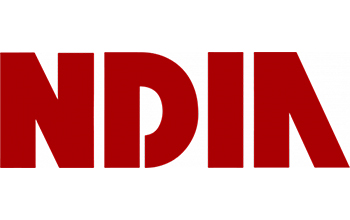3 EVM Heresies: Unorthodox Thinking for Reinventing Earned Value Management (EVM) Methods

If you spend a decade or two as an EVM consultant, there will be days when you want to question everything. You may even find yourself questioning the most fundamental aspects of earned value.
For example, do we really need all 32 EVMS Guidelines used for formal EV? And what would EVM be like without a schedule? Usually, we shrug these questions off and get back to work, but what if we took a moment to entertain them? What if we had the freedom to become an EVM heretic just for one day?
That’s what we did at a recent AzTech workshop. We posed some heretical questions to a group of EV professionals. The results were so fun and productive that they inspired us to write this blog post.
Here are the EVM “heresies” we discussed at the workshop:
1. What If We Had to Choose ONLY ONE EVM Guideline Instead of 32?
The 32 Guidelines are so fundamental, that it’s hard to imagine EVM without them. But we broke our workshop into groups and asked them to decide which Guideline they would choose if they could only have one.
Almost unanimously, each group chose Guideline 1 (The Work). This makes sense. If you don’t get the project work scope right, everything falls apart.
Next, we asked which Guidelines they would choose if they could only have three. On the whole, most chose Guideline 6 (The Schedule) as the second-most important. This also makes sense. If Guideline 1 tells you what you’re going to do, then Guideline 6 tells you how and when you’re going to get it done. And since most agree that schedule drives cost, this puts Guidelines 1 and 6 right at the top. Both are essential!
But what about the third? Instead of telling you what the workshop decided here, we will save it until the end of this post. Also, consider asking someone at the water cooler (more likely a Zoom or Teams chat) what they think of the question. It just might inspire a spirited debate!
2. What If We Didn’t Have “The Schedule?”
Next, we asked the workshop participants, “What if your EVM method didn’t have a schedule?” It might sound strange, but there are many ways to climb a tree. So let’s forget about the Integrated Master Schedule for a moment and consider it.
Maybe we replace the traditional schedule with a more flexible task management approach using flexible online tools like Monday.com, Smartsheet, Jira, or even Slack or Microsoft Team’s increasingly powerful features. What if increased collaboration and interactivity outsmarted robust scheduling tools like Microsoft Project or Primavera P6?
What if we took task management to the next level and gamified it? Teams could take ownership of specific parts of the project scope and compete virtually to finish tasks before their opponents. By meeting or exceeding targets for scope, schedule, cost, and quality, teams could earn points, bonuses, or prizes.
This approach also leads to the concept of invisible or transparent EVM, which involves applying EVM methods without requiring teams to know traditional scheduling methodologies.
Do you think implementing a gamified schedule like this could be successful at your firm?
3. What If We Had NO BASELINE?
The idea of gamifying EVM opens Pandora’s box of heretical ideas. For example, a point system could be used to eliminate baselines and baseline change request documents.
Maybe we don’t go crazy and eliminate the baseline concept, but what if we baselined the project in 3 to 6-month chunks through the entire project duration? But – we allowed radical flexibility within each time chunk. Let’s say our team is supposed to finish some work in the first three months. If we finish early, we get bonus points. If we finish it later, we lose some points. If we finish late, but with technical breakthroughs or improved downstream efficiency then we get more bonus points. If we are wildly off the mark, then we buckle down with more traditional baseline management.
This refocuses the team on completing the work and dialing in new ideas or lessons learned without the pain of baseline change management.
The gamification opportunities are endless!
Conclusion: It’s Okay to Indulge in a Bit of EVM Heresy
Have you decided on the third-most important Guideline yet? Our workshop participants chose Guideline 28 (Variance Analysis Reporting, The VARs) after some debate. Would you pick variances for the #3 spot, or would you choose something else? Remember, we’re heretics — there are no rules to this game except for rethinking how we might modernize EVM!
Although some of these “heretical” ideas sound impossible, questioning the EVM method’s sacred cows at the workshop inspired us to develop fresh thinking to maintain EVM’s enduring value and relevance. Ironically, this process helped us gain a new appreciation for the VALUE of traditional EVM methods and see where we could be less rigid in our thinking, and more flexible where needed and appropriate.
If your team could indulge in a little bit of EVM heresy, which three guidelines would you keep? Which three would you toss?
Connect with us to keep the conversation going or drop a comment below. You’ll never know what we uncover or discover together. This is a judgment-free zone and we’d love to hear your thoughts.
Subscribe to our Newsletter:






